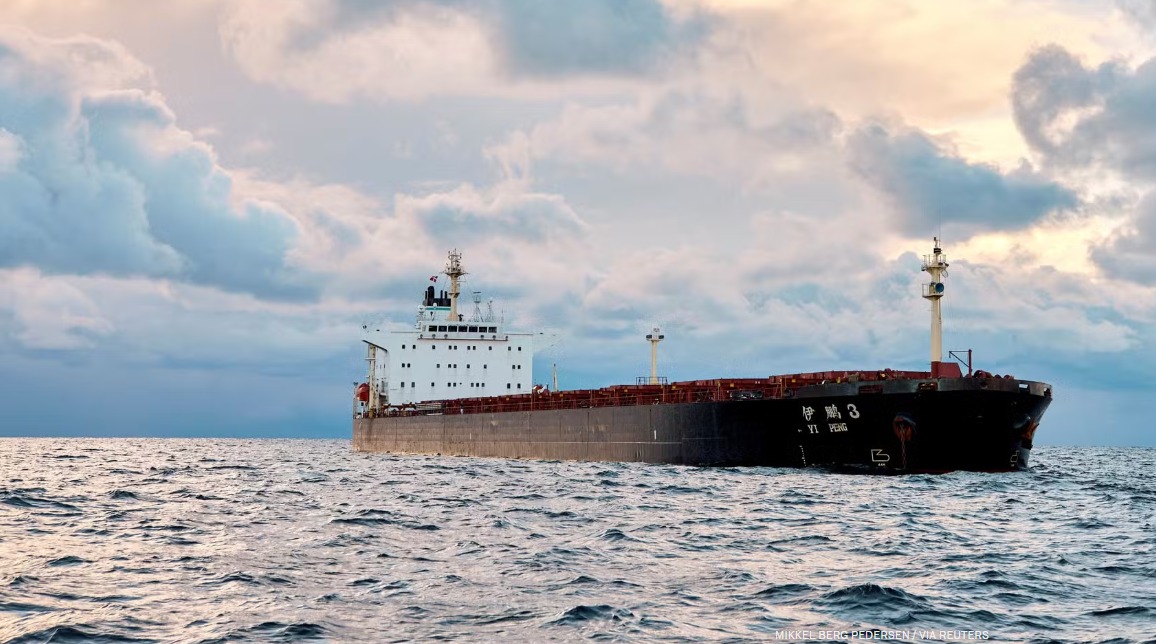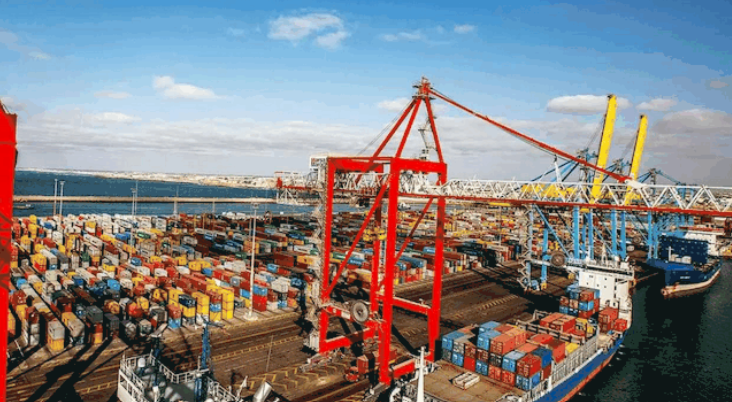« Le Monde » has reconstructed the itinerary of the Yi-Peng 3. This data provides insight into why this merchant ship, currently immobilized between Sweden and Denmark, is the prime suspect in the damage caused to two submarine cables in the Baltic Sea.
Several days after the successive failures of two submarine telecommunications cables in the Baltic Sea, which have rekindled fears of hybrid warfare, a Chinese cargo ship has emerged as the main suspect in this unprecedented act of potential sabotage, according to data analyzed by Le Monde.
Since the evening of Tuesday, November 19, while en route to exit the Baltic Sea, the Yi-Peng 3, a 225-meter-long bulk carrier, has been immobilized in the middle of the Kattegat Strait, between the Danish and Swedish coasts. Under the close watch of a Danish Navy frigate, the Danish armed forces—initially silent—finally acknowledged their presence near the Chinese vessel on Wednesday. Contrary to widespread online reports, Denmark had not seized the ship as of Thursday morning.
The Chinese bulk carrier Yi-Peng 3 (in the background) anchored under the surveillance of a Danish Navy vessel in the middle of the Kattegat Strait (Denmark), November 20, 2024. MIKKEL BERG PEDERSEN / VIA REUTERS
Danish Defense Minister Troels Lund Poulsen remained cautious as of Wednesday evening, stating, « We do not yet know the extent of the incident or whether it is an act of sabotage. » Similarly, Swedish authorities have been cautious, as the investigation appears to be led by Stockholm, with the two cable breakage points located within its exclusive economic zone. Meanwhile, Chinese Foreign Ministry spokesman Lin Jian emphasized that China has “always fully complied with its obligations as a flag state” and demanded that “Chinese vessels strictly adhere to all applicable laws and regulations.”
An investigation led by the Swedish police, assisted by the coast guard and navy, has been quickly launched. « The police and prosecutor’s office are focusing on a ship spotted in the relevant area. The vessel is not currently in Swedish waters, » stated a police communiqué. According to sources from Swedish public television, the investigation is particularly centered on the Yi-Peng 3. Understanding this requires a review of recent events.
A Ship with a Highly Suspicious Path
The bulk carrier departed from Russia, with its AIS transponder—the system that makes it visible to other vessels—showing its location at the port of Ust-Luga, about 100 kilometers from Saint Petersburg, on November 10. Satellite imagery from that day at 1:37 PM (French time) confirms it docked at the expansive oil and gas terminal. The ship’s dimensions and AIS transmission times allowed Le Monde to identify it. This was a week before the Baltic Sea cable ruptures.
The Yi-Peng 3 docked in Russia, November 10, 2024. LE MONDE WITH PLANET LABS
According to port records and AIS data, the Yi-Peng 3 departed Ust-Luga on Friday, November 15, shortly before 1 PM (French time). “There was absolutely nothing unusual about the vessel,” the Russian pilot who guided it out of the port told The Guardian, describing the ship as « standard » and noting its Chinese crew. The bulk carrier then headed west and south.
On Sunday, around 9 AM (French time), Telia, the operator of the BSC cable—a fiber optic line connecting Lithuania to Sweden’s Gotland island—detected a cut. Eighteen hours later, early Monday morning, Cilia, the company managing the C-LION1 cable running between Finland and Germany, identified a severe fault. According to Le Monde’s data, the Yi-Peng 3 was directly above both cables when they malfunctioned.
The precise rupture point of the BSC cable can be identified—near the area where the Swedish Navy’s Belos, equipped with underwater robots, has been stationed since Thursday noon, tasked with capturing video of the damaged cable. AIS data confirm that the Yi-Peng 3 passed over this location on Sunday morning, between 8:36:55 AM and 9:15:54 AM (French time). The cable failure occurred within this timeframe, with slight internet disruptions detected shortly before 9 AM. Based on the ship’s speed, it passed directly over the Swedish Navy’s inspection site at 8:51 AM.
BSC Cable Rupture Area
The pattern repeated several hundred kilometers further south. According to Finland’s telecommunications authority, data transmission along the C-LION1 cable ceased between 3:04:22 AM and 3:04:33 AM (French time). The rupture’s precise location aligns with the zone where the Belos operated between Tuesday night and Wednesday afternoon.
C-LION1 Cable Rupture Area
Again, GPS coordinates derived from AIS data place the Yi-Peng 3 directly above this point between 3:02:44 AM and 3:05:15 AM—within the interval when the cable was damaged. Estimates based on its speed suggest the ship was over the site less than a minute before the incident.
A Necessary Authorization from China
The Yi-Peng 3 continued its journey, briefly halting for over an hour mid-morning off Karlskrona, southern Sweden, for unknown reasons. The next day, heading towards the North Sea, it passed through the Great Belt Strait, dividing Denmark’s two regions. This moment was captured by Yörük Isik, a Turkish maritime traffic analyst, whose authenticated photographs show the Chinese bulk carrier passing under the bridge around noon.
Trailing closely behind was the HDMS Hvidbjørnen, a Danish Navy frigate, with other military vessels later taking turns monitoring the ship. By late afternoon, it was anchored in the Kattegat waters, midway between Sweden and Denmark.
The next steps remain uncertain, as the ship is not within Danish territorial waters, making seizure impossible without authorization from China, the vessel’s flag state. « If we proceed without China’s consent, we risk explaining our actions before the International Tribunal for the Law of the Sea, » Kristina Siig, a maritime law professor at the University of Southern Denmark, explained to Danish television. The ship is effectively considered a small piece of Chinese territory. Authorities now face a delicate situation.
Source: Le Monde



